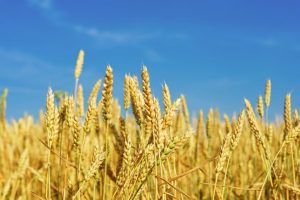Looking for a comprehensive wheat farming business plan in Nigeria for your personal use or to seek grants, and loans from investors, CBN, NIRSAL, and other institutions?
In this article, you will learn how to invest in a wheat farming business. You will also learn about the process of setting up a wheat flour mill and selecting a location for your farm. In addition, you will learn how to calculate the necessary capital and operating expenses. These are vital components of any business plan.

Investing in a wheat farming business
Wheat farming is one of the most lucrative business ventures available. This grain is consumed worldwide, and it has many applications. However, before starting your farm, you should have a detailed plan. This document should address every aspect of the business, including organizational structure, funding, staff requirements, and operational license. In addition, you will need to secure farm land and acquire seedlings.
You will need to invest a significant amount of capital, which is difficult to raise in the beginning. However, you will likely have the support of your family if you start a family farm. If you don’t have any family members or friends, you can consider a partnership with a local farmer.
Wheat is a temperate crop, which means that it grows best in the winter, under irrigation. The optimum temperature for the crop is between 15 and 20 degrees Celsius, and the nights should be cool. However, there are wheat varieties that can be grown in the summer, but these yields are significantly lower than those produced during the colder months.
The optimum plant population for wheat is 220-250 plants per m2. Planting rates vary depending on seed size and germination percentage. Generally, farmers should use 110 to 125 kilograms of seed per hectare when broadcasting or drilling. This will help them to achieve good standability and minimize Powdery mildew.
As food prices continue to rise, there is a strong market for wheat. Grain prices are still undervalued in comparison to their energy counterparts and represent a large opportunity for investors. This crop is classified by the USDA as a strategic grain. Inflation and the need to feed a growing population will likely drive prices up.
Wheat prices are currently experiencing their biggest weekly surge since 2008, and buyers are balking at prices that were previously unattainable. At the same time, farmers have already experienced the worst farm cost inflation in years. Because of this, some growers have even had their bids pulled from grain elevators.
The average price of wheat varies greatly by year, variety, and quality. Soft white wheat, hard spring wheat, and durum wheat tend to command premium prices. Other factors such as test weight, protein content, and deoxynivalenol are also used to determine premiums and discounts. In addition, the demand for wheat has increased globally as a result of population growth in many developing countries. However, per capita consumption of wheat has decreased over the past century.
The Wheat Farming business plan will have these chapters:
- Introduction
- Executive summary
- Business Description
- Objective and Goals
- Mission and Vision Statement
- Management
- Material and Equipment
- Competitor analysis
- Market Strategy
- Market trends
- Our target market
- Our competitive advantage
- Sales and marketing strategy
- Sales forecast
- Payment options
- Financial analysis
- Sources of startup capital
Setting up a wheat flour mill business
Setting up a wheat flour mill business in your wheat farming business plan requires a number of steps that can be taken to ensure your success. First, you will need to secure funding. The amount of funding required for your flour mill depends on how big you want to make it, what type of machines you need, and how much raw material you plan to buy. Next, you will need to secure a business license and register with the local government. This will allow you to comply with any local laws and regulations.
Despite its simple nature, setting up a wheat flour mill business requires a large number of business licenses and permits. These include company registration, GST registration, trade license, and trademark registration. In addition, you will also need a BIS certification and a State Pollution Control Board certificate. Then, you need to make sure that you have a good road network, so you can access raw materials easily and deliver your finished product.
When setting up a flour mill, you’ll want to make sure that you have ample space. Make sure you have enough space for your milling equipment, raw materials, and finished products, as well as enough space for an office layout. Lastly, you’ll want to consider your location, as it will have a significant impact on your business. If you plan to set up a large flour mill, you should consider setting up your business in a non-residential area so that there will be less competition. You can also consider the size of the market for the products you’ll be selling.
You’ll also need to investigate the methods of production. You’ll want to know which machines you need and which raw materials are available at the most affordable prices. Next, you’ll want to choose a location where consumers can easily get their hands on your product. This may mean choosing a location that is close to a bakery or supermarket.
Whether you decide to start a small mill or a large one, wheat flour milling is a viable business. The capital required for this venture is not as high as for other types of businesses. And the demand for flour is very high. With all the benefits of flour, setting up a small mill could be a lucrative and worthwhile venture for you.
Selecting a location for a wheat farm
If you are planning to start a wheat farm, then selecting a location is a very important step to take. You will need to select a location that offers the best opportunities for farming wheat. This can be a difficult task if you do not have enough money to set up your farm. You will need to consider several factors before you make your final decision. For instance, you will need to choose a location that is close to your home.
Once you have decided on the location, you will need to choose the type of crops and products that you will be growing. You will want to determine if the soil, water and other resources are right for farming. You should also consider the type of buildings needed to accommodate the operation.
You should also consider the future inputs that your farm will require, such as fertilizers and pesticides. You will also want to consider hiring custom operators to work on your farm. You should also decide if you are going to purchase new machinery or invest in new production methods. Finally, you should plan how you will deal with nutrient management and other environmental issues.
You may also want to consider the climate in the area where you will be growing your wheat. It is best to choose a location where temperatures are 21 degrees Celsius or higher. This is because the wheat plant is very versatile and can thrive in a wide range of agro-climatic conditions. It can survive in tropical and sub-tropical areas and in temperate areas. It is also suitable for colder regions and high elevations.
The location you choose is important because it will determine how much sunlight your crops will receive. Depending on the aspect of the fields and proximity to trees, some areas will receive more sunlight than others. You can improve the amount of sunlight by clearing away some trees. However, areas with less sunlight are more likely to be colder and wetter, which will limit your growing season and decrease your production capacity.
Financial Analysis for Wheat Farming
One of the most important aspects of a wheat farming business plan is its financial section. It should contain an accounting of all current income and operating expenses. It should also include a forecast of future capital requirements and operating expenses. Ideally, the financial plan should fit in with the farm’s mission statement.
The balance sheet should include the farm’s total assets and indebtedness, available cash, and liquid assets. This information can help determine the business’s current ratio, its capacity to attract equity capital, and its willingness to take risk. A separate income statement should show how much profit the farm is making. This report is usually prepared annually, based on the accrual method of accounting. For farmers who plan to operate the farm in conjunction with a spouse or partner, it’s important to develop several balance sheets.
The last column of an enterprise analysis includes information about the cash flow of the enterprise. It’s important to note that cash flow is different from revenue and cost. For example, a farmer may harvest straw for bedding, but that particular activity doesn’t produce cash. A farmer’s cash flow is income less than the cost of the straw. Another important consideration in a financial analysis is the cost of capital. If you have to borrow money to finance your farm, the cost of capital is the rate of interest you pay lenders. A higher interest rate will make it more difficult to attract additional capital.
In the last half-decade, the wheat, barley, and sorghum farming industry has been prone to high volatility due to unpredictable weather patterns, a ban on exports from Russia, and the fluctuation of the world wheat price. However, the industry is projected to grow in profitability over the next few years. Nevertheless, there is a risk that changes in government policies will impede profits.
The financial aspect of a wheat farming business plan is important because most farm decisions have financial consequences. As a result, it’s crucial to analyze alternatives consistently. While some alternatives can be evaluated quickly, others will require a longer time to analyze. In such cases, an enterprise budget helps analyze relevant tradeoffs and determine whether an enterprise is financially viable.
How To Download Wheat Farming Feasibility Study Template PDF and Doc
Above is a part of the wheat farming business plan n Nigeria. In case you need the complete study, follow the procedures to download it.
Pay the sum of N8000 (Eight thousand naira only) to the account detail below:
Bank: GTBank
Name: Oyewole Abidemi (I am putting my name and not our company account so you know we are real people and you can trust us)
Ac/No: 0238933625
Type: Saving
Thereafter, send us your email address through text message to +234 701 754 2853. The text must contain the title of the wheat farming business plan you want and also your email address. Immediately after the confirmation of your payment, we will send the document to your email address where you can easily download it.

2 comments
Hi I need to know how to get wheat seeds
Hmn